#witchy holiday
Explore tagged Tumblr posts
Text






Happy Lughnasadh, ancient festival of Middsummer!
#lughnasadh#lammas#sabbat day#happy sabbat#middsummer#summer sabbat#have a great summer#or what is left of it#witchy holiday#pagan festival#lammas is here#i tried to emulate a little a sunset with the gifs with how the colors turn darker#not my best work#but it's cute i guess#hope you enjoy
24 notes
·
View notes
Text
December 2024 Witch Guide
New Moon: December 1st & December 30th
First Quarter: December 8th
Full moon: December 15th
Last Quarter: December 22nd
Sabbats: Yule: December 21st-January 1st
December Cold Moon
Also known as: Aerra Geola, Drift Clearing Moon, Frost Exploding Trees Moon, Heilagmanoth, Hoar Frost Moon, Little Spirit Moon, Long Night's Moon, Moon of Popping Trees, Moon Before Yule, Moon When the Dear Shed their Antlers, Oak Moon, Snow Moon, Winter Maker Moon, Wintermonat & Wolf Moon
Element: Fire
Zodiac: Sagittarius & Capricorn
Nature spirts: Snow Faeries, Storm Faeries & Winter Tree Faeries
Deities: Athena, Fates, Hades, Hathor, Hecate, Ixchel, Minerva, Neith, Norns, Osiris & Persephone
Animals: Bear, deer, horse & mouse
Birds: Robin, rook & snowy owl
Trees: Cedar, evergreen, fir, holly & pine
Herbs: Bay, cinnamon, English ivy, frankincense, mistletoe, myrrh & sage
Flowers: Chamomile & poinsettia
Scents: Cedar, cinnamon, frankincense, ginger, lilac, myrrh, nutmeg, patchouli, pine, rose geranium, rosemary, saffron, violet & evergreen
Stones: Aquamarine, bloodstone, cat's eye, garnet, jacinth, obsidian, peridot, ruby, serpentine, topaz, turquoise
Issues, intentions & powers: Dedication, devotion, love, peace, prosperity & strength
Energy: Alchemy, darkness, endurance, death&rebirth, higher education, reaching out to others, religious, spiritual paths, travel & truths
This full Moon has also been called the Long Night Moon (Mohican), as it rises during the “longest” nights of the year, near the December winter solstice. This name is doubly fitting because December’s full Moon shines above the horizon for a more extended period than most full Moons.
• This December is unique because there will be TWO new Moons. This is called a Black Moon.
A Black Moon is a special kind of New Moon, just as a Blue Moon is a special kind of Full Moon. Neither are astronomical terms; both are catch phrases for an unusual lunar calendar occurrence. For this reason, the definition of a Black Moon can vary and may refer to:
-The second new Moon in a month. This is the definition of Black Moon that’s used most often & it’s the most common. It occurs once every 29 months.
-The third new Moon in a season of four New Moons. Every season (spring, summer, fall, winter) has 3 months & 3 new Moons. However, occasionally (every 33 months), there is a season with 4 new Moons. In this case, the third New Moon is called a Black Moon.
-When there are NO new Moons in a month. This can only happen in February since it’s the only calendar month that is shorter (28 days) than the lunar month. When there is not a new Moon in February, there will be two new Moons for both January & March. It’s a rare occurrence (every 19 years or so) and the next one isn’t until 2033.
Yule
Known as: Alban Arthan & Winter Solstice
Season: Winter
Element: Earth
Symbols: Baskets of clove studded fruit, decorated evergreen trees, evergreen boughs, gifts, gold pillar candles, holly, mistletoe, poinsettias, wreaths & Yule logs
Colors: Gold, green, orange, red, silver, white & yellow
Oils/Incense: Bayberry, cedar, cinnamon, frankincense, myrrh & pine
Animals: Bear, boar, deer, pig, squirrel & tiger
Birds: Eagle, goose, kingfisher, lapwing, robin & wren
Stones: Alexandrite, bloodstone, blue topaz, cat's eye, citrine, clear quartz, diamond, emerald, garnet, green tourmaline, jet, kunzite, pearls & ruby
Angel: Auriel
Food: Caraway cakes, cookies, eggnog, fruits, gingerbread, ginger tea, nuts, pork, spiced cider, roasted boar, roasted chicken, turkey & wassail
Herbs/Plants: Bay, bayberry, blessed thistle, cedar, cinnamon, evergreen, frankincense, holly, ginger, ivy, juniper, mistletoe, moss, myrrh, oak, pine, rosemary, sage, valerian & yellow cedar
Flowers: Chamomile & yarrow
Trees: Birch, cedar, chestnut, fir, holly, juniper, oak, pine & yew
Goddesses: Alcyone, Aphrodite, Ameratasu, Bona Dea, Brighid, Cailleach Bheur, Demeter, Diana, Fortuna, Frau Holle, Frau Perchta, Frigga, Gaia, Great Mother, Kolyada, La Befana, Idunn, Isis, maat & Tiamat
Gods: Apollo, Attis, Baldur, Bragi, Devak, Dionysus, Divine Child, Green man, Janus, Hel, Helios, Holly King, Horned One, Horus, Lord of Misrule, Lugh, Mabon, Marduk, Mithras, Oak King, Odin, Ra, Saturn & Surya
Spellwork: Earth magick, happiness, harmony, love & peace
Issues, Intentions & Powers: Darkness, divination, light, messages/omens, purification, rebirth, renewal & transformation
Activities:
• Set up & decorate a Yule altar
• Clean, organize & cleanse before decorating your home
• Make witch’s balls to hang on your tree (protective & pretty!)
• Decorate & bless & Yule tree
• Stay awake until dawn to observe the cycles of nature
• Give gifts to your family & friends
• Donate your time or helpful items to charity
• Collect snow for winter/ snow magic
• Go caroling
• Hang mistletoe in your doorways
• Make Wassail
• Prepare a Yule Log
• Host a Yule feast
• Craft your own decorative wreath or garlands with oranges, cinnamon & pine
• Decorate your house with Yule colored candles
• Welcome the Sun
• Go on nature walks & leave offerings to nature
• Meditate & reflect on the passing year
“Yule” comes from Old English geol, which shares a history with the equivalent word from Old Norse, jól. Both these words referred to a midwinter festival centered around the winter solstice, which traditionally marked the halfway point of the winter season. After the solstice—the shortest day of the year—the days again begin to grow longer, so it’s thought that Yule was a celebration of the re-appearance of the Sun &the fertile land’s rebirth.
• The celebration of Yule is one of the oldest winter celebrations in the world. Ancient people were hunters & spent most of their time outdoors. The seasons & weather played a significant part in their lives. The customs & traditions associated with it vary widely. Scholars have connected the original celebrations of Yule to the Wild Hunt, the god Odin & the heathen Anglo-Saxon Mōdraniht (“Mothers’ Night”)
• Some believe it marks the rebirth of the Sun (the God) from the Earth (the Goddess) & the cold days of winter will soon begin to wane. The Goddess is seen in her virgin Maiden aspect
In towns and cities throughout Sweden during the Christmas season, large goats are constructed out of straw. It is thought that the tradition originated in ancient times, perhaps as a tribute to the god Thor, who was said to ride in a chariot pulled by goats. In Sweden the goat came to be associated with the Christmas celebration & the Yule goat is now considered by many to be a companion or counterpart to Santa Claus.
This connects to ancient proto-Slavic beliefs where the Koliada (Yule) festival honors the god of the fertile sun & the harvest. This god, Devac (also known as Dazbog or Dažbog), was represented by a white goat. Consequently the Koliada festivals always had a person dressed as a goat, often demanding offerings in the form of presents. A man-sized goat figure is known from 11th-century remembrances of Childermas, where it was led by a man dressed as Saint Nicholas, symbolizing his control over the Devil.
Related festivals:
•Christmas- December 25th:
An annual festival commemorating the birth of Jesus Christ as the son of God. For Christians, believing that God came into the world in the form of man to atone for the sins of humanity rather than knowing Jesus's exact birth date is considered to be the primary purpose of celebrating Christmas.
Hanukkah-December 25-January 2nd:
A Jewish festival commemorating the recovery of Jerusalem & subsequent rededication of the Second Temple at the beginning of the Maccabean Revolt against the Seleucid Empire in the 2nd century BCE.
Hanukkah is observed for eight nights & days, starting on the 25th day of Kislev according to the Hebrew calendar, which may occur at any time from late November to late December in the Gregorian calendar. The festival is observed by lighting the candles of a candelabrum with nine branches, commonly called a menorah or hanukkiah.
Kwanzaa-December 26th-January 1st:
An annual celebration of African-American culture, culminating in a communal feast called Karamu, usually on the sixth day. It was created by activist Maulana Karenga, based on African harvest festival traditions from various parts of West & Southeast Africa. Kwanzaa was first celebrated in 1966.
A Kwanzaa ceremony may include drumming and musical selections, libations, a reading of the African Pledge & the Principles of Blackness, reflection on the Pan-African colors, a discussion of the African principle of the day or a chapter in African history, a candle-lighting ritual, artistic performance & finally, a feast of faith (Karamu Ya Imani).
Saturnalia- December 17-23rd:
An ancient Roman festival and holiday in honour of the god Saturn, The holiday was celebrated with a sacrifice at the Temple of Saturn, in the Roman Forum & a public banquet, followed by private gift-giving, continual partying & a carnival atmosphere that overturned Roman social norms: gambling was permitted & masters provided table service for their slaves as it was seen as a time of liberty for both slaves & freedmen alike.
A common custom was the election of a “King of the Saturnalia”, who gave orders to people, which were followed & presided over the merrymaking. The gifts exchanged were usually gag gifts or small figurines made of wax or pottery known as sigillaria. The poet Catullus called it “the best of days”.
Other celebrations:
Feast of Epona- December 18th:
Eponalia is the feast day of Gaulish Goddess Epona, the Divine Mare & in the time of the Roman Empire
Epona is known to be one of a very few Gaulish deities whose names were spread to the rest of the Roman Empire. This seems to have happened because Roman cavalry units stationed in Gaul followed her & adopted her as their Patroness. This may have started because many of the cavalry troops were conscripted from Gaul as they were superb horsemen. From Gaul the Romans took Epona with them including to Rome where She was given her own feast day on the 18 December. They worshipped her as Epona Augusta or Epona Regina & invoked her on behalf of the Emperor. She even had a shrine in the barracks of the Imperial Bodyguard.
Hunting of the Wren-December 26th:
A traditional custom carried out on the Isle of Man on St. Stephen’s Day. It consists of groups of people going around villages and towns singing and dancing a traditional song and dance around a decorated wren pole.
The earliest and most common folklore story accounting for the origin of hunt the wren tells of a fairy/enchantress/witch whose beauty lures the men of the Isle of Man to harm, for which she is chased and is changed into the form of a wren. It is therefore in punishment for her actions that the wren is hunted on St. Stephen’s Day
Sources:
Farmersalmanac .com
Llewellyn's Complete Book of Correspondences by Sandra Kines
Wikipedia
A Witch's Book of Correspondences by Viktorija Briggs
Encyclopedia britannica
Llewellyn 2024 magical almanac Practical magic for everyday living
#December#december 2024#cold moon#witch guide#December 2024 witch guide#witchblr#wiccablr#paganblr#witch#witch community#witchcore#witchcraft#witches of tumblr#tumblr witches#yule#winter solstice#beginner witch#baby witch#witch tips#grimoire#book of shadows#spellbook#pagan#wicca#traditional witchcraft#holiday#witchy stuff#witchy things#beginner witch tips#baby witch tips
191 notes
·
View notes
Text
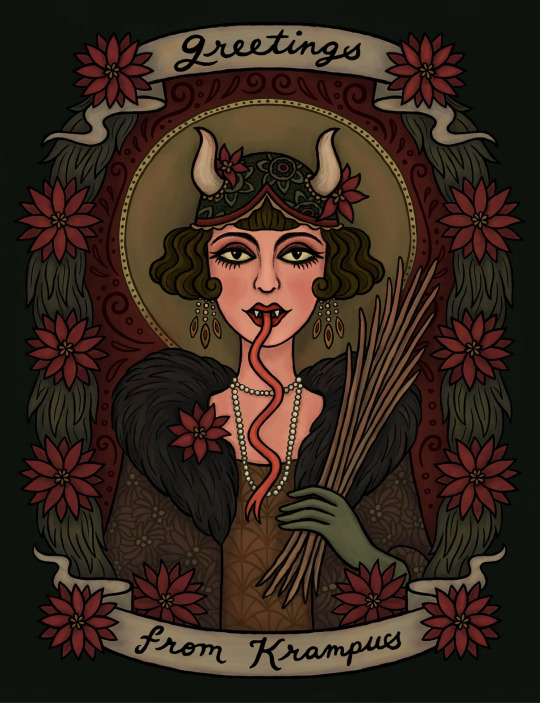



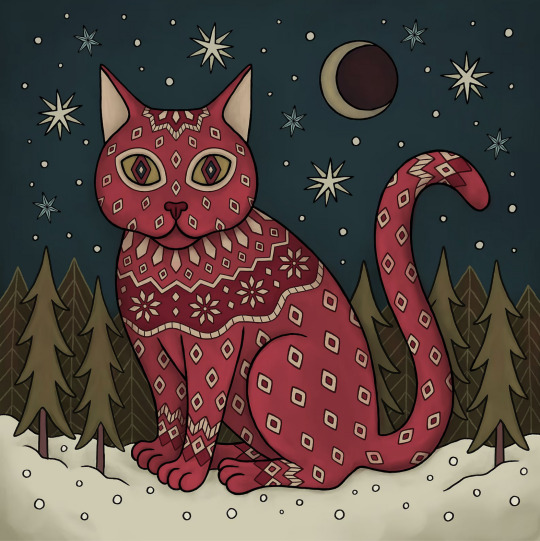

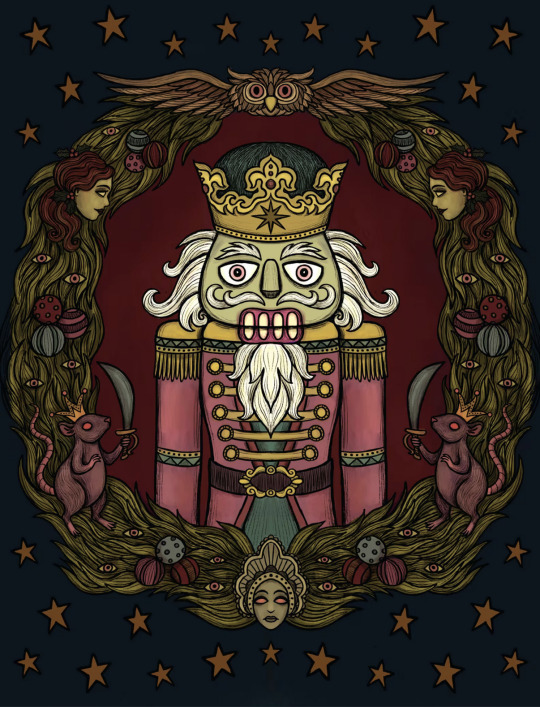

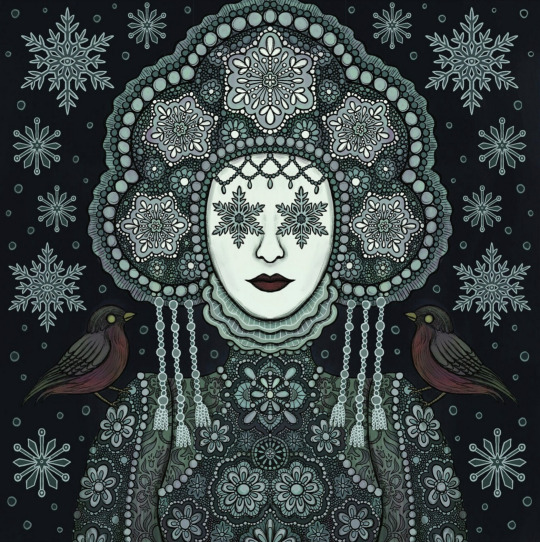
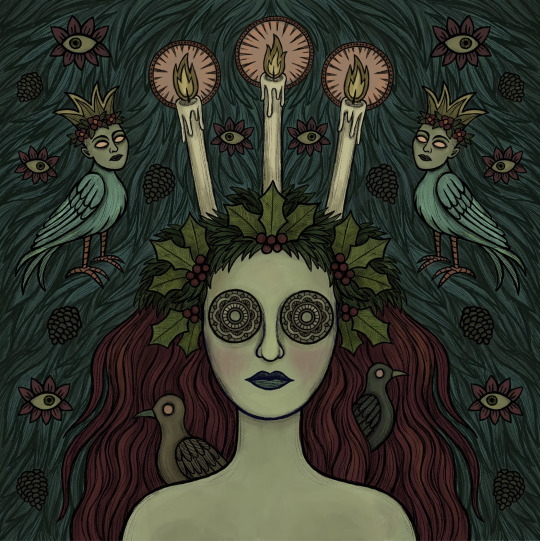
Witchy Holiday Cards & Art by DuchessofLore
x / x / x / x / x x / x / x / x / x
#art#art print#christmas#xmas#yule#yuletide#christmas cards#holiday cards#witchy christmas#goth christmas#pagan#pagan holidays#mari lwyd#winter solstice#krampus#greeting cards#drawing#illustration
852 notes
·
View notes
Text

Blessed Lammas/Lughnasadh 🪻🥖🌻
#lammas#lughnasadh#pagan#fire festival#summer#wiccan#wheel of the year#pagan holiday#moodboard#celtic#celtic holiday#witchy aesthetic#witchcraft#witchblr#sabbats#sabbat#wicca
256 notes
·
View notes
Text

All About Imbolc
Imbolc, also known as Imbolg, celebrated on February 1st, marks the halfway point between the winter solstice and the spring equinox in early Ireland and Scotland, and also signified the beginning of the first signs of spring after all the harsh winter days. Originally a pagan holdiay in pre-Christian times, there is little in writing about the historic traditions and customs, although many historians believe it revolved around the Celtic Goddess Brigid, lambing season, and cleansing due to observed ancient poetry.
Brigid is a Goddess and daughter of the father-God of Ireland, Dagda. She is associated with quite a few things depending on the sources, but universally associated with wisdom and poetry. Other associations of hers are blacksmithing, protection, domesticated animals, childbirth, fire, and healing. She was also known as a protector of the home and the family.
Once Christianity arose, it is believed that the Goddess was syncretized with the Irish Saint Brigid by Christian monks due to the many overlapping associations. This caused Imbolc to quickly turn into St. Brigids Day and the next day into Candlemas with the rising Christian popularity, enmeshing the holiday associations together.
Today, many people have mixed the traditions and melded many associations from both religious and cultural history to celebrate their own unique way. Common ways to celebrate are making a Brigid's Cross, welcoming Brigid into the home, having a feast in her honor, cleaning the home and oneself, visiting a holy well, and in some parts of the world they still hold festivals and processions carrying a representation of Brigid. Many pagans nowadays are using associations of hers and their connection with nature to create their own ways to celebrate, however, and you can absolutely celebrate however you feel called to do so.
Imbolc Associations:
Colors - white, gold or yellow, green, and blue
Food - milk, butter, cheese, seeds and grains, breads, herbs, blackberries, oat porridge, wild onion and garlic, honey
Animals - sheep and lambs, swans, cows, burrowing and hibernating animals
Items - candles, corn dolls, Brigid's cross, fires, snowdrops and white flowers, crocuses and daffodils, flower crowns
Crystals - amethyst, garnet, ruby, quartz, bloodstone
Other - lactation, birth, feasting, farm preparation, cleansing and cleaning, the sun, poetry and creative endevours, smithing, water
Ways To Celebrate Imbolc:
make a Brigid's cross
light candles
have a feast
bake bread
plan your spring garden
leave an offering for Brigid
make a corn doll
craft a flower crown
clean your home
take a cleansing bath
make something out of metal
have a bonfire
look for the first signs of spring
make your own butter or cheese
do divination work and seek wisdom
write a poem
#magical#magic#magick#witch#witchy#pagan#paganism#witchblr#imbolc#imbolg#brigid#st brigid#candlemas#holiday#baby witch#witch tips#sabbat#wheel of the year#wiccan#celtic#gaelic#history#brigit#beginner witch#witchcraft#witchcore#cottage witch#hedge witch#green witch#eclectic witch
570 notes
·
View notes
Text









Yule Sale Shop Update!
Here's what's new this week:
Dragon blood jasper points
Amethyst with smoky quartz spheres
3" Fluorite slab
Herkimer diamonds with petroleum inclusions
Grape agate worry stones
3" Black tourmaline point
Bronze talons sphere stand
Obsidian scrying mirror
> See all our newest additions here <
Grab a coupon code below to save on your orders thru December 27th!
YULE10 - 10% off, no minimum YULE20 - 20% off $30+ YULE25 - 25% off $45+ YULE30 - 30% off $60+ YULE35 - 35% off $75+
These codes are good for all items in the Crystals, Jewelry and Home Decor collections and exclude Apothecary items.
Need something extra to bump you up to the next coupon? Check out our Under $15 and Under $5 collections!
Happy Yule, and happy shopping! ✨🎄
Browse the full catalog → See this week's secret discount item →
#crystals#minerals#gemstones#witchy#witchcraft#crystal shop#witchblr#rock shop#crystal healing#crystal shops#shop small#small business#holiday sale#holiday shopping#aesthetic#witchcore#witches#magick#grape agate#rainbow fluorite#obsidian#black tourmaline#dragon blood jasper#dragonblood jasper
95 notes
·
View notes
Text
Witches










Spooky Masterlist
#halloween#theme: holidays#spooky masterlist#theme: spooky#spooky#theme: witchy#theme: witch aesthetic#witches#color: multi pattern#post dividers#dividers#graphic design
96 notes
·
View notes
Text









mariathearcane on ig
#stim#stimboard#witchy#yule#sfw#brown#white#orange#altars#witchcraft#decor#candles#fire#flames#lamps#jars#trees#holidays#hands#statues#pagan#winter solstice#ishy gifs#postish
77 notes
·
View notes
Text

Haunted Holiday House Incense Cone Burner at Beserk SHOP NOW
#beserk#alternative#beserk clothing#gothic#goth#alternative fashion#fashion#gothgoth#hexmas#gothmas#goth christmas#christmas#holiday season#happy holidays#holidays#xmas#festive#alternative goth#goth aesthetic#gothcore#goth fashion#goth home#homewares#incense#witchy#witchcraft#witchcore#witchblr#alt aesthetic#alt
57 notes
·
View notes
Text
Happy Turning Day!
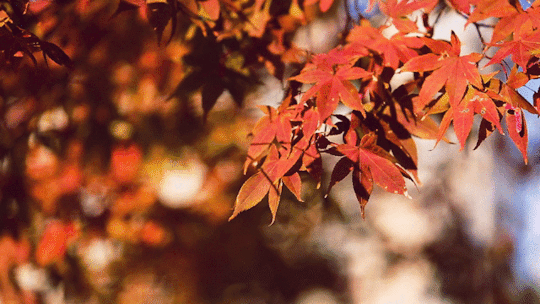
This is the movable holiday in my personal calendar when the approach of autumn is celebrated. Turning Day marks the day when reddening maple leaves are first observed prior to the autumn solstice. In my area, this typically happens in early September.
Maple trees tend to be the first trees to display seasonal changes. They blossom in late winter/early spring, their seeds begin to drop in early summer, they often show the first signs of color change in early autumn, and their sap runs in winter the minute the weather starts to turn toward spring thaw. Thus I look to them in my practice as harbingers of change and the cycles of life, growth, and harvest.
Other personal holidays in my calendar include:
First Robin Day - the day on which the first wild robin is seen following the winter solstice, heralding the spring
First Flowers Day - the day on which early blooms are first observed in local gardens before the spring solstice
Planting Day - the day on which I plant my first round of seeds for the year
Dandelion Day - the day on which the first yellow dandelion appears in my yard in springtime, heralding the summer
Falling Flowers - the period during which blossoms from cherry or myrtle trees start to come loose and drift on the wind or collect in piles
Spirit Day - the day on which the local Spirit Halloween opens
First Frost - the day on which frost is first observed on windows ahead of the winter solstice
(Due to climate change and my local climate zone being different from the one I was raised in, seasonal changes are a bit off-kilter and solstices and equinoxes don't always directly align with the type of weather I grew up knowing. So watching for these little signs helps me to celebrate those changes and have something to look forward to.)
Note: This is my UPG (Unshared Personal Gnosis) and thus is not subject to peer review or approval, nor do I expect it to fit perfectly into or account for the beliefs of others. That being said, the creation of personal holidays and observances is a practice as old as humanity and I happily encourage others to try out the idea themselves if they feel so inclined.
(If you’re enjoying my content, please feel free to drop a little something in the tip jar or check out my published works on Amazon or in the Willow Wings Witch Shop. You can also check out my show Hex Positive on the Nerd & Tie Podcast Network and wherever fine podcasts are heard. 😊)
78 notes
·
View notes
Text
Witchy Ways To Navigate This Holiday Season
(Regardless of what you celebrate, it’s highly likely that you’ll be meeting with or engaging in some sort of holiday sometime during the year, so you might find this helpful. Reconnecting with family and friends can be a joy, but can also be draining for people who are easily overwhelmed by other people’s energies). THESE IDEAS ARE CUSTOMIZABLE BUT ARE INFLUENCED BY MY PERSONAL BELIEFS.
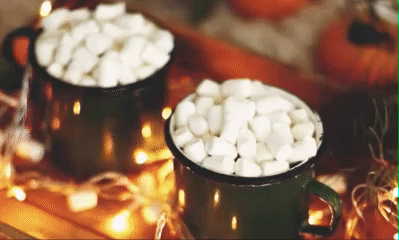
🌲Enchant your perfume or cologne with a specific intention. (Example: Ward off uncomfortable conversation, ward off nerves, energize your social battery).
🌲When choosing what to wear, include a necklace, jewelry item, or accessories (such as a tie) that you consider protective of your energy. For me, I wear a pentacle bracelet, but for you it might be something different. You can even ask spirits or deities you work with to charge it overnight on the night before with protection.
🌲I like to draw the rune Wunjo or the rune Gebo on every present I gift with invisible ink or just trace it with my finger, so it brings joy to the person receiving it! You could draw a symbol that represents joy in a similar fashion!
🌲Knot magic is an easy way to incorporate love into the gift exchanging. Tie your presents you’re giving with decorative ribbons and charge each one with love or chant over it this short chant “With love I tie thee, may all be merry!”
🌲If you’re making a special drink (hot-chocolate, mulled wine, etc) be mindful of the energy you put into it while stirring it. You can invite or banish (you’ve probably heard that stirring clockwise is inviting energy and stirring counterclockwise is banishing). But you can also stir simple sigils of calm and peace into it!
🌲If you’re into using crystals, I recommend these crystals for navigating the holiday season:
-Strawberry quartz (for enjoyment and extra enthusiasm)
-Smoky Quartz (for gentle protection and comfort)
-Howlite (for calming during chaos and being present)
-Opal (both non precious and precious, for inspiring generosity and equal exchange of energy)
#witchblr#witch#holiday season#witchcraft#spirituality#paganism#norse paganism#witch community#witchy#pagan#witchcore#witches of tumblr#yule#jól#witchy holidays#witch holidays#witch tip#baby witch
372 notes
·
View notes
Text

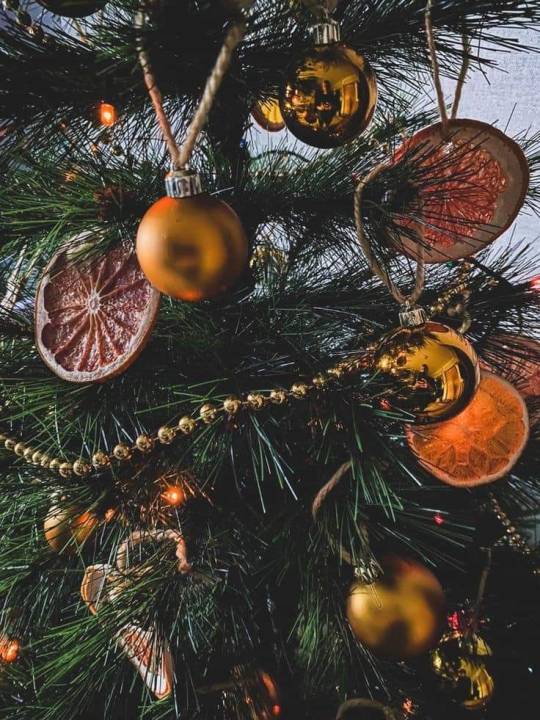
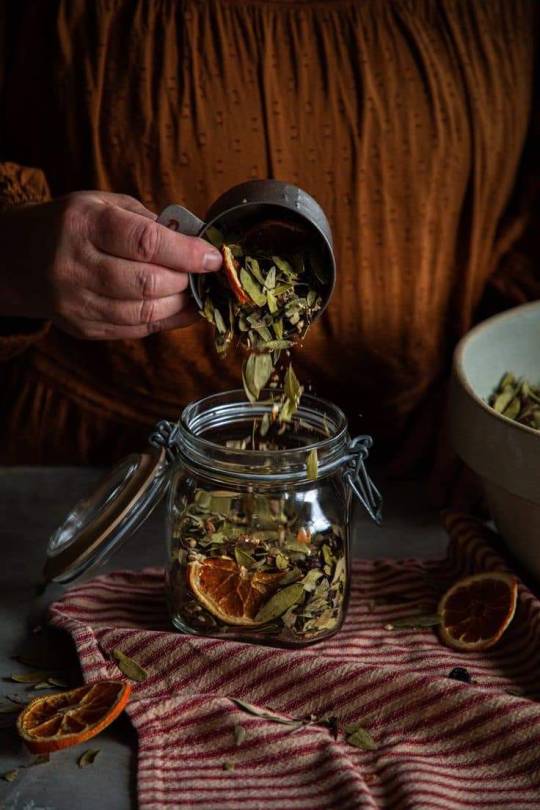

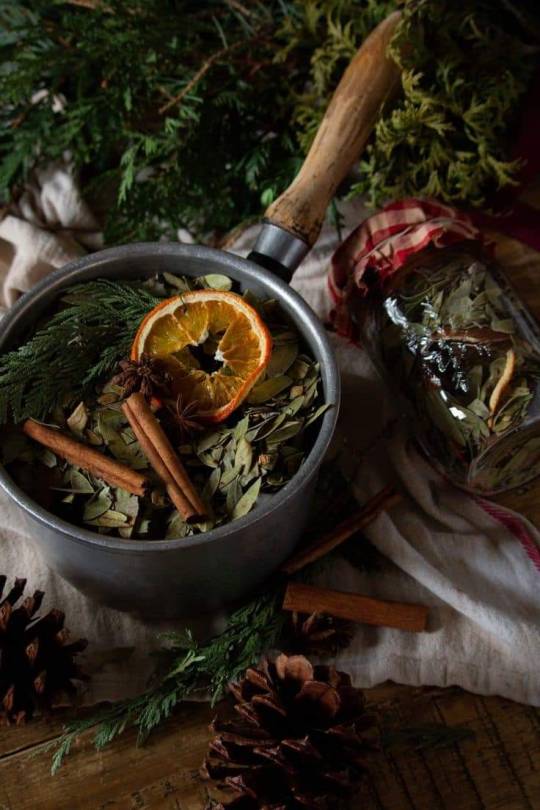
Yule
203 notes
·
View notes
Text
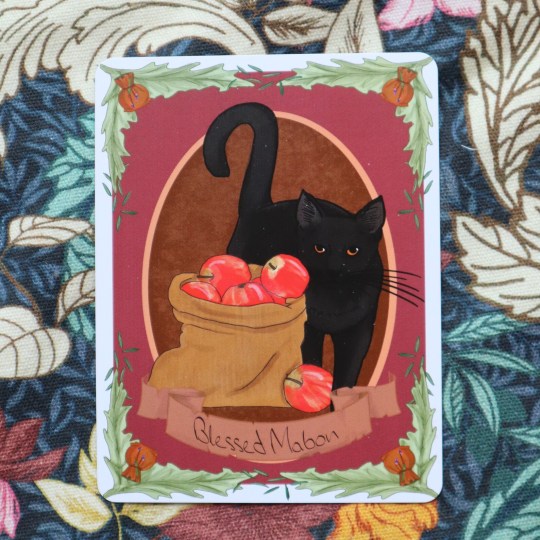
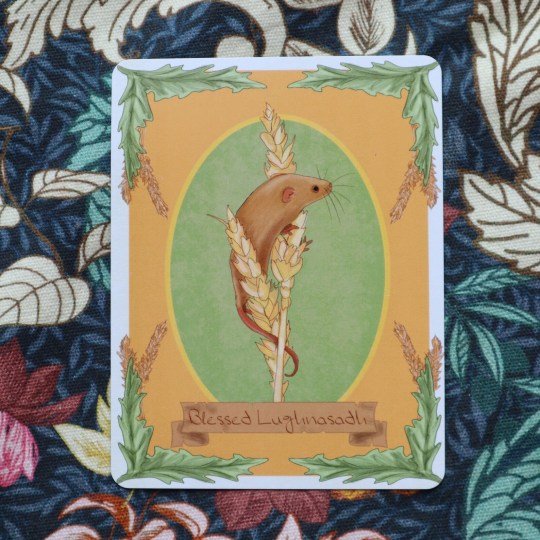

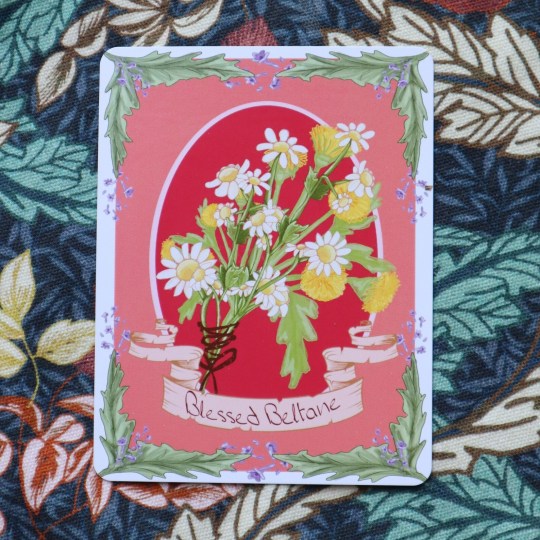


Wheel of the Year Art Prints by ofcraftsandcurios
Mabon // Lughnasadh // Litha // Beltane // Ostara // Imbolc
#art#art print#wheel of the year#pagan#pagan holidays#mabon#lughnasadh#litha#beltane#ostara#imbolc#samhain#yule#witchy#witchcraft#witchy art#drawing#illustration
292 notes
·
View notes
Text
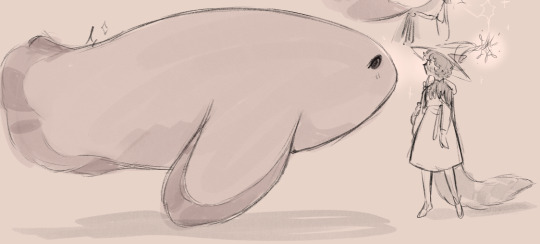
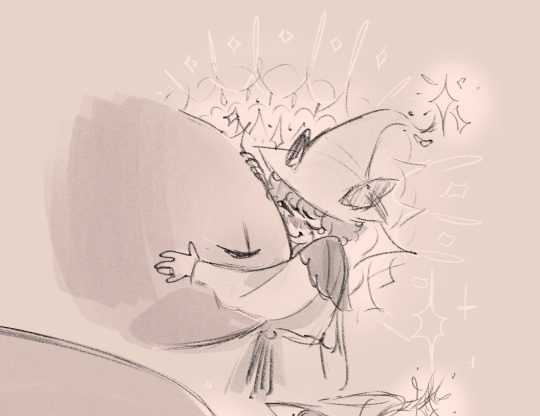
doodles i forgot to post whoopsie
#my sona#but all witchy for the holidays c:#also these whale fellas r from an old dream but i love them n still remember them from time to time#sillay thangs#my art#doodle
246 notes
·
View notes
Text

All About Lughnasadh
Lughnasadh, also known as Lughnasa or Lúnasa, is the name given to the Gaelic festival that represents the beginning of the harvest season, which traditionally falls on August 1st in the northern hemisphere. The holiday is about halfway between the summer solstice and autumn equinox, and is one of the 4 Gaelic seasonal festivals. Although it is traditionally Irish, many neopagans celebrate the holiday as well.
Traditionally named after the Irish God Lugh, Lughnasadh has been documented to be celebrated since at least the middle ages and involved great gatherings, ceremonies, athletic games like the Tailteann Games, feasting, horse racing, matchmaking, trading, and more, and were traditionally celebrated on top of hills and mountains. The festival remained widely celebrated until about the 20th century, where it seemed to be replaced by Christian counterparts.
Lugh, the God the festival is named after, is said to have founded the holiday as a funeral feast and funeral games to commemorate the death of an earth goddess. The Irish stories vary throughout regions and times, but it usually involves a woman who is stolen away or held against her will and dies of grief, shame, exhaustion, or unspecified causes. There is notable similarities to the Greek Persephone tale. According to a tale about the Lughnasadh festival site Tailtin, it is said to be a funeral for his foster-mother, Tailtiu, who was said to have died from exhaustion after clearing the plains of Ireland for agriculture. A tale about the Lughnasadh site Naas, says the festival was founded in the memory of his two wives, Nás and Bói. Another theory states it was a mourning for the end of summer.
Máire MacNeill, a folklorist, studied the later lore of the holiday and claims it is about a struggle for the harvest between Lugh and another god, often named Crom Dubh. In some stories Lugh must seize Crom Dubh's treasure of grain to give to all of mankind. In other stories, it's over a woman named Eithne who represents grain. Othertimes, its a battle of Lugh defeating a figure representing blight. There doesn't seem to be one agreed upon legend, other than it's revolving around the God Lugh.
As for ancient customs and traditions, they can vary region to region and have morphed throughout time. However, a big tradition was the gathering at Óenach Tailten, a type of olympic style games and gathering where kings declared truces during the entire festival in order to partake and compete against eachother. It included ritual athletic and sporting competitions, horse racing, music and storytelling, trading, law-making and settling legal disputes, creating contracts, and even matchmaking. A common matchmaking tradition was allowing couples to enter a trial marriage that lasted a year and a day by joining hands through a wooden door, after of which they could make permanent or break without consequences once the trial marriage was up. One gathering, called the Óenach Carmain, also consisted of a food and livestock market along with a market for foreign traders.
Other traditions also included a solemn cutting of the first corn to be offered to the deity by bringing it to a high place and burying it, a meal for everyone consisting of the new food and blueberries, a sacrifice and rituals involving a sacred bull, a ritual dance-play, reenactment of the lore, and closing ceremonies. Climbing hills and mountains were also a popular tradition, but has been rebranded overtime as Christian pilgrimages. At some gatherings, everyone wore flowers and climbed a hill, where they buried said flowers at the top to signify the ending of summer. At other gatherings, the first sheaf of harvest was buried instead.
A popular tradition up until about the 18th century were faction fights where young men fought eachother with sticks. One such game consisted of building towers of sod topped with a flag to defend from the other team's sabotaging. Bull sacrifices were also recorded into the 18th century, being used as offerings to various deities, along with special meals made from the first harvest. A special cake called the lunastain was also recorded. Visiting holy wells was also a very prominent tradition, just like during the other yearly festivals. Although bonfires were associated with Lughnasadh and the other main Celtic festivals, they were considered rare for this holiday, most likely due to the very warm summer temperatures.
Some traditions are still celebrated today in Ireland, with festivals being held in honor of Lughnasadh and re-enactors and historians reviving and teaching new generations old lore. There are still markets, traditional dancing, traditional storytelling, arts and craft workshops, feasting, and much more during these modern gatherings, keeping the traditions alive and well, even if they differ region to region. Some pagans and Wiccans also celebrate Lughnasadh, usually differing in their practices, but still using it as a signifier of the first harvest and summer's ending.
Lughnasadh Associations
Colors - yellow, orange, red, brown, green, gold, bronze
Food - blueberries, blackberries, grains, fruit, vegetables, bread, corn, beef, stews, lamb, wine, beer, cider, fruit drinks
Animals - bulls/cows, roosters, sheep
Items - scythes and harvest tools, grain/corn stalks
Crystals - citrine, aventurine, tigers eye, carnelian, topaz
Other - sporting/athletic competitive games, storytelling, matchmaking, cycle of life, harvest
Ways to celebrate:
gather blueberries or blackberries
enjoy grains or breads
make homemade bread
have a feast
climb a hill/take a pilgrimage
offer food to your deity(ies)
commit or recommit to your partner
harvest fresh food from your garden
visit a farmers market
complete a craft or make art
participate in an athletic competition or game
#witch#witchcraft#magick#magic#lughnasadh#lunasa#celtic pagan#eclectic pagan#wiccan#wicca#wheel of the year#sabbath#lammas#lugh#deity#offering#pagan holiday#irish holiday#witchy#spiritual#witchblr#pagan#grimoire#witchcore#harvest#irish#celtic#gaelic#spellwork#paganblr
63 notes
·
View notes
Text






Sylverra Crystals Yule Sale 2024
It's that time again, and we've made a handful of coupons to help you save on your holiday shopping!
YULE10 - 10% off, no minimum YULE20 - 20% off $30+ YULE25 - 25% off $45+ YULE30 - 30% off $60+ YULE35 - 35% off $75+
These codes are good for all items in the Crystals, Jewelry and Home Decor collections and exclude Apothecary items.
Need something extra to bump you up to the next coupon? Check out our Under $15 and Under $5 collections!
Happy Yule, and happy shopping! ✨🎄
❄️ Browse the full catalog → 🎁 Shop by category →
All codes expire 12/27/24 at 11:59 pm ET. Cannot be combined with other discounts. Free shipping applies to US orders with a total of $50+ after discount.
#crystals#minerals#gemstones#witchy#witchcraft#crystal shop#witchblr#rock shop#crystal healing#crystal shops#altarspace#altar#witchcore#witchy vibes#shop small#support small business#yule sale#christmas sale#holiday sale
117 notes
·
View notes